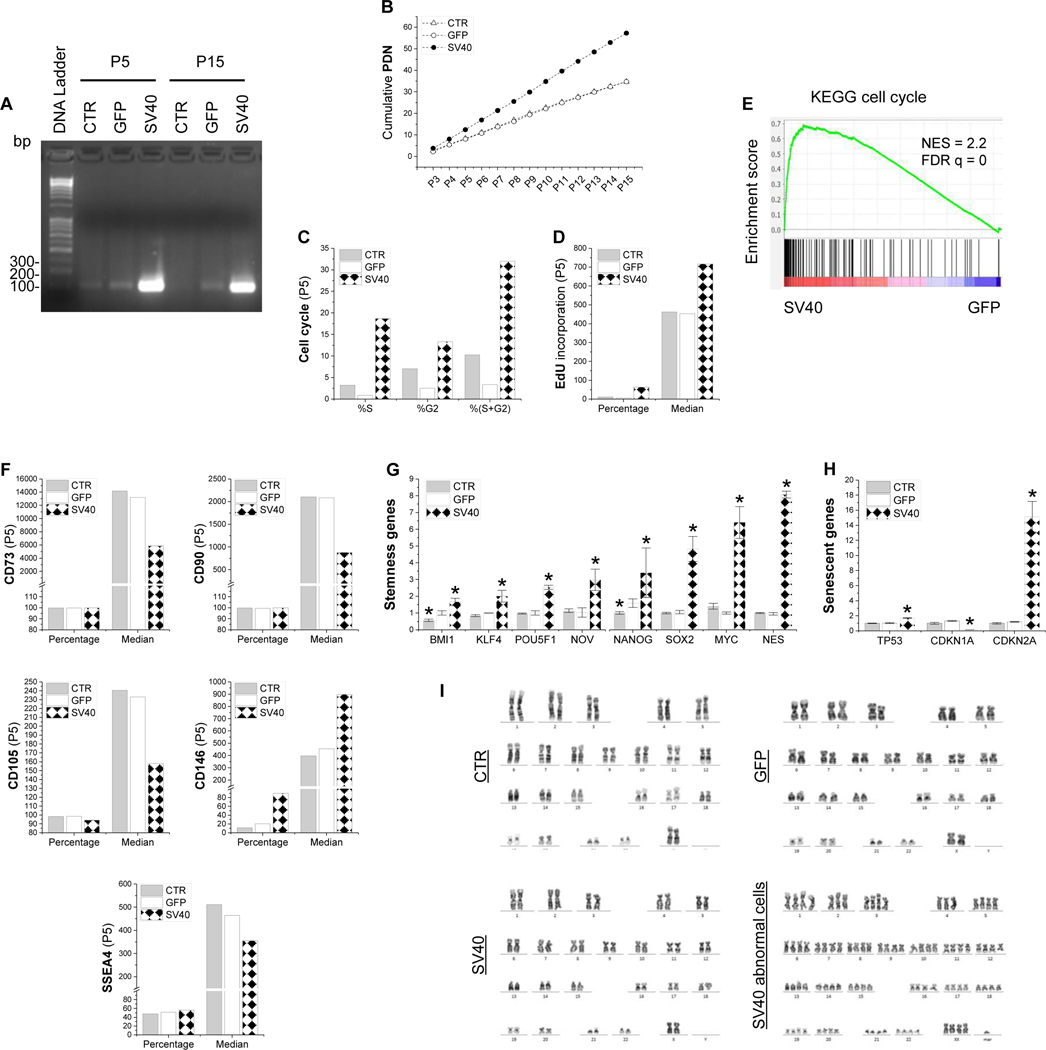Figure 1.
SV40LT transduction promoted human IPFSCs in cell proliferation and stemness. IPFSCs transduced with lentivirus carrying GFP served as a viral transduction control (GFP) and those without transduction served as a blank control (CTR). Successful transduction of SV40LT in IPFSCs (A), evidenced by RT-PCR data in both passage 5 and 15 cells. Evaluation of proliferation used cumulative population doubling number (PDN) in IPFSCs from passage 3 to 15 (B) along with flow cytometry for cell cycle analysis (C) and relative EdU incorporation (D). GSEA for expressed genes ranked by the fold change of expression (SV40/GFP) at passage 5 against the MSigDB gene set KEGG cell cycle (NES: normalized enrichment score) (E). Flow cytometry was employed to evaluate MSC surface markers including CD73, CD90, CD105, CD146 and SSEA4 (F). TaqMan® real-time quantitative PCR was used to evaluate stemness genes (BMI1, KLF4, POU5F1, NOV, NANOG, SOX2, MYC and NES) (G) and senescence genes (TP53, CDKN1A and CDKN2A) (H). Data are exhibited as bar charts. * means a statistically significant difference compared to the corresponding GFP control (p<0.05). Evaluation of chromosome abnormality of SV40LT transduced IPFSCs using karyotype analysis (I).

